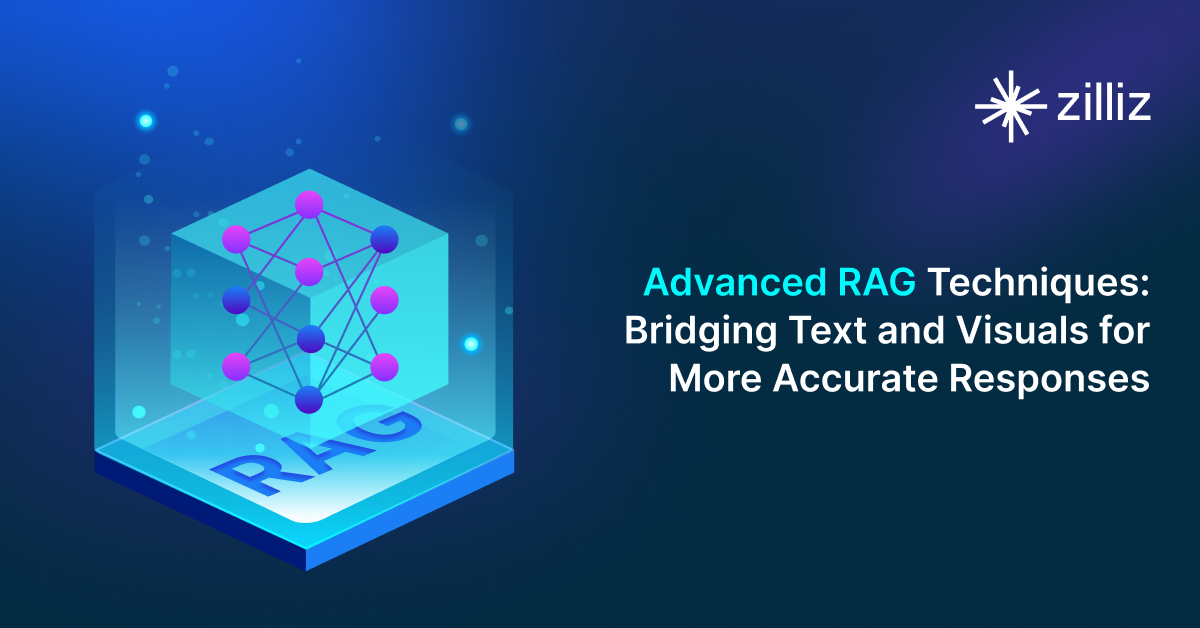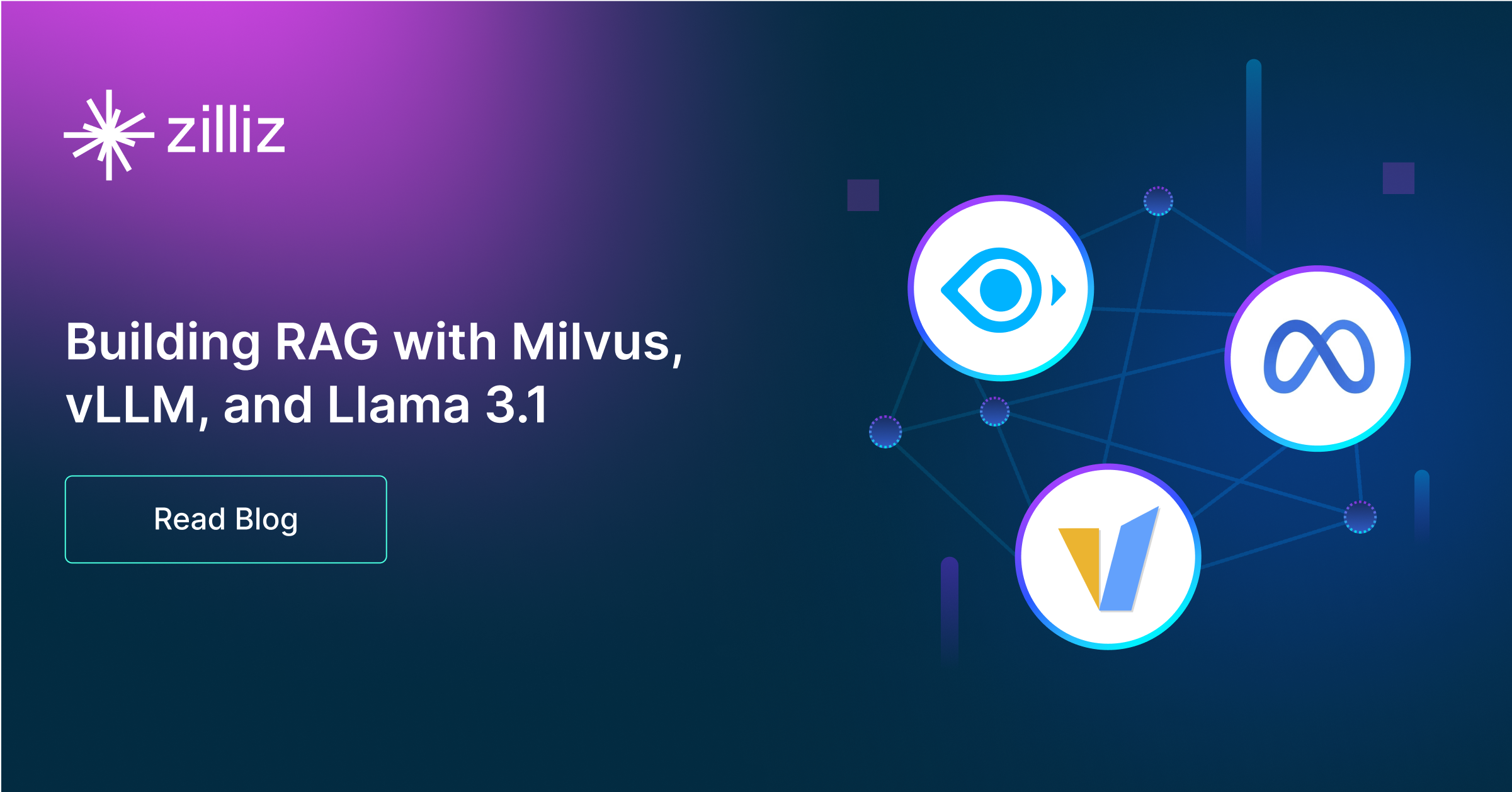Build RAG Chatbot with LangChain, Zilliz Cloud, Google Vertex AI Claude 3 Haiku, and Ollama snowflake-arctic-embed
Introduction to RAG
Retrieval-Augmented Generation (RAG) is a game-changer for GenAI applications, especially in conversational AI. It combines the power of pre-trained large language models (LLMs) like OpenAI’s GPT with external knowledge sources stored in vector databases such as Milvus and Zilliz Cloud, allowing for more accurate, contextually relevant, and up-to-date response generation. A RAG pipeline usually consists of four basic components: a vector database, an embedding model, an LLM, and a framework.
Key Components We'll Use for This RAG Chatbot
This tutorial shows you how to build a simple RAG chatbot in Python using the following components:
- LangChain: An open-source framework that helps you orchestrate the interaction between LLMs, vector stores, embedding models, etc, making it easier to integrate a RAG pipeline.
- Zilliz Cloud: a fully managed vector database-as-a-service platform built on top of the open-source Milvus, designed to handle high-performance vector data processing at scale. It enables organizations to efficiently store, search, and analyze large volumes of unstructured data, such as text, images, or audio, by leveraging advanced vector search technology. It offers a free tier supporting up to 1 million vectors.
- Google Vertex AI Claude 3 Haiku: A versatile model within Google’s Vertex AI ecosystem, it is designed for seamless integration and enhanced generative capabilities. It excels in natural language processing tasks, such as text generation, summarization, and conversational AI. Ideal for businesses seeking to leverage AI for robust, scalable applications in various domains.
- Ollama Snowflake-Arctic-Embed: This model specializes in generating high-dimensional embeddings for structured and unstructured data, leveraging advanced deep learning techniques. Its strengths include efficient handling of large datasets and producing contextual representations, making it ideal for applications in recommendation systems, semantic search, and personalized content delivery.
By the end of this tutorial, you’ll have a functional chatbot capable of answering questions based on a custom knowledge base.
Note: Since we may use proprietary models in our tutorials, make sure you have the required API key beforehand.
Step 1: Install and Set Up LangChain
%pip install --quiet --upgrade langchain-text-splitters langchain-community langgraph
Step 2: Install and Set Up Google Vertex AI Claude 3 Haiku
pip install -qU "langchain[google-vertexai]"
# Ensure your VertexAI credentials are configured
from langchain.chat_models import init_chat_model
llm = init_chat_model("claude-3-haiku@20240307", model_provider="google_vertexai")
Step 3: Install and Set Up Ollama snowflake-arctic-embed
pip install -qU langchain-ollama
from langchain_ollama import OllamaEmbeddings
embeddings = OllamaEmbeddings(model="snowflake-arctic-embed")
Step 4: Install and Set Up Zilliz Cloud
pip install -qU langchain-milvus
from langchain_milvus import Zilliz
vector_store = Zilliz(
embedding_function=embeddings,
connection_args={
"uri": ZILLIZ_CLOUD_URI,
"token": ZILLIZ_CLOUD_TOKEN,
},
)
Step 5: Build a RAG Chatbot
Now that you’ve set up all components, let’s start to build a simple chatbot. We’ll use the Milvus introduction doc as a private knowledge base. You can replace it with your own dataset to customize your RAG chatbot.
import bs4
from langchain import hub
from langchain_community.document_loaders import WebBaseLoader
from langchain_core.documents import Document
from langchain_text_splitters import RecursiveCharacterTextSplitter
from langgraph.graph import START, StateGraph
from typing_extensions import List, TypedDict
# Load and chunk contents of the blog
loader = WebBaseLoader(
web_paths=("https://milvus.io/docs/overview.md",),
bs_kwargs=dict(
parse_only=bs4.SoupStrainer(
class_=("doc-style doc-post-content")
)
),
)
docs = loader.load()
text_splitter = RecursiveCharacterTextSplitter(chunk_size=1000, chunk_overlap=200)
all_splits = text_splitter.split_documents(docs)
# Index chunks
_ = vector_store.add_documents(documents=all_splits)
# Define prompt for question-answering
prompt = hub.pull("rlm/rag-prompt")
# Define state for application
class State(TypedDict):
question: str
context: List[Document]
answer: str
# Define application steps
def retrieve(state: State):
retrieved_docs = vector_store.similarity_search(state["question"])
return {"context": retrieved_docs}
def generate(state: State):
docs_content = "\n\n".join(doc.page_content for doc in state["context"])
messages = prompt.invoke({"question": state["question"], "context": docs_content})
response = llm.invoke(messages)
return {"answer": response.content}
# Compile application and test
graph_builder = StateGraph(State).add_sequence([retrieve, generate])
graph_builder.add_edge(START, "retrieve")
graph = graph_builder.compile()
Test the Chatbot
Yeah! You've built your own chatbot. Let's ask the chatbot a question.
response = graph.invoke({"question": "What data types does Milvus support?"})
print(response["answer"])
Example Output
Milvus supports various data types including sparse vectors, binary vectors, JSON, and arrays. Additionally, it handles common numerical and character types, making it versatile for different data modeling needs. This allows users to manage unstructured or multi-modal data efficiently.
Optimization Tips
As you build your RAG system, optimization is key to ensuring peak performance and efficiency. While setting up the components is an essential first step, fine-tuning each one will help you create a solution that works even better and scales seamlessly. In this section, we’ll share some practical tips for optimizing all these components, giving you the edge to build smarter, faster, and more responsive RAG applications.
LangChain optimization tips
To optimize LangChain, focus on minimizing redundant operations in your workflow by structuring your chains and agents efficiently. Use caching to avoid repeated computations, speeding up your system, and experiment with modular design to ensure that components like models or databases can be easily swapped out. This will provide both flexibility and efficiency, allowing you to quickly scale your system without unnecessary delays or complications.
Zilliz Cloud optimization tips
Optimizing Zilliz Cloud for a RAG system involves efficient index selection, query tuning, and resource management. Use Hierarchical Navigable Small World (HNSW) indexing for high-speed, approximate nearest neighbor search while balancing recall and efficiency. Fine-tune ef_construction and M parameters based on your dataset size and query workload to optimize search accuracy and latency. Enable dynamic scaling to handle fluctuating workloads efficiently, ensuring smooth performance under varying query loads. Implement data partitioning to improve retrieval speed by grouping related data, reducing unnecessary comparisons. Regularly update and optimize embeddings to keep results relevant, particularly when dealing with evolving datasets. Use hybrid search techniques, such as combining vector and keyword search, to improve response quality. Monitor system metrics in Zilliz Cloud’s dashboard and adjust configurations accordingly to maintain low-latency, high-throughput performance.
Google Vertex AI Claude 3 Haiku optimization tips
Claude 3 Haiku on Google Vertex AI is designed for low-latency RAG applications requiring fast retrieval and generation. Optimize retrieval by using efficient vector search techniques to minimize irrelevant data in the context. Keep prompts short and structured to maximize clarity while reducing token usage. Set temperature between 0.1 and 0.3 for fact-based queries to maintain accuracy. Use Google Cloud’s auto-scaling and caching features to handle peak loads effectively. If deploying in a multi-model setup, reserve Haiku for fast, high-volume tasks while offloading complex reasoning to larger models. Implement response streaming for real-time applications to reduce latency and improve interactivity.
Ollama snowflake-arctic-embed optimization tips
To optimize the Ollama snowflake-arctic-embed component in your Retrieval-Augmented Generation setup, ensure that you fine-tune the embedding model on domain-specific data to improve relevance and accuracy. Utilize a caching mechanism for frequently accessed embeddings to reduce computation time. Experiment with different embedding dimensions to balance performance and resource usage, and implement vector quantization techniques to save memory space without significantly impacting quality. Additionally, regularly monitor the performance metrics and adjust your hyperparameters accordingly to achieve the best outcomes in your retrieval tasks.
By implementing these tips across your components, you'll be able to enhance the performance and functionality of your RAG system, ensuring it’s optimized for both speed and accuracy. Keep testing, iterating, and refining your setup to stay ahead in the ever-evolving world of AI development.
RAG Cost Calculator: A Free Tool to Calculate Your Cost in Seconds
Estimating the cost of a Retrieval-Augmented Generation (RAG) pipeline involves analyzing expenses across vector storage, compute resources, and API usage. Key cost drivers include vector database queries, embedding generation, and LLM inference.
RAG Cost Calculator is a free tool that quickly estimates the cost of building a RAG pipeline, including chunking, embedding, vector storage/search, and LLM generation. It also helps you identify cost-saving opportunities and achieve up to 10x cost reduction on vector databases with the serverless option.
 Calculate your RAG cost
Calculate your RAG cost
What Have You Learned?
By diving into this tutorial, you’ve unlocked the power of building a modern RAG system from the ground up! You learned how LangChain acts as the glue, elegantly orchestrating workflows to connect your data sources, language models, and vector databases. With Zilliz Cloud, you harnessed a scalable vector database to store and retrieve embeddings efficiently, ensuring your system handles real-world data volumes smoothly. Google Vertex AI’s Claude 3 Haiku became your go-to LLM for generating precise, context-aware responses, while Ollama’s Snowflake-Arctic-Embed model transformed raw text into rich embeddings, capturing nuanced semantic relationships. Together, these tools formed a seamless pipeline: ingesting data, converting it into embeddings, storing them for lightning-fast retrieval, and synthesizing answers that feel almost human. You even discovered pro tips like optimizing chunk sizes for embeddings and filtering metadata to boost accuracy—small tweaks with big impact!
But this isn’t just about theory; you’ve gained practical superpowers. The free RAG cost calculator taught you to balance performance and budget, making smart choices about scaling and model selection. Now imagine what’s next: customizing this pipeline for your niche datasets, experimenting with hybrid search strategies, or fine-tuning models for domain-specific brilliance. The tools are in your hands, and the possibilities are endless. So go ahead—build that chatbot that wows users, craft that research assistant that digs deeper, or prototype the next big thing in AI-driven insights. You’ve got the blueprint; now it’s time to innovate, optimize, and make your mark. The future of intelligent applications starts with you hitting “run”! 🚀
Further Resources
🌟 In addition to this RAG tutorial, unleash your full potential with these incredible resources to level up your RAG skills.
- How to Build a Multimodal RAG | Documentation
- How to Enhance the Performance of Your RAG Pipeline
- Graph RAG with Milvus | Documentation
- How to Evaluate RAG Applications - Zilliz Learn
- Generative AI Resource Hub | Zilliz
We'd Love to Hear What You Think!
We’d love to hear your thoughts! 🌟 Leave your questions or comments below or join our vibrant Milvus Discord community to share your experiences, ask questions, or connect with thousands of AI enthusiasts. Your journey matters to us!
If you like this tutorial, show your support by giving our Milvus GitHub repo a star ⭐—it means the world to us and inspires us to keep creating! 💖
- Introduction to RAG
- Key Components We'll Use for This RAG Chatbot
- Step 1: Install and Set Up LangChain
- Step 2: Install and Set Up Google Vertex AI Claude 3 Haiku
- Step 3: Install and Set Up Ollama snowflake-arctic-embed
- Step 4: Install and Set Up Zilliz Cloud
- Step 5: Build a RAG Chatbot
- Optimization Tips
- RAG Cost Calculator: A Free Tool to Calculate Your Cost in Seconds
- What Have You Learned?
- Further Resources
- We'd Love to Hear What You Think!
Content
Vector Database at Scale
Zilliz Cloud is a fully-managed vector database built for scale, perfect for your RAG apps.
Try Zilliz Cloud for Free


